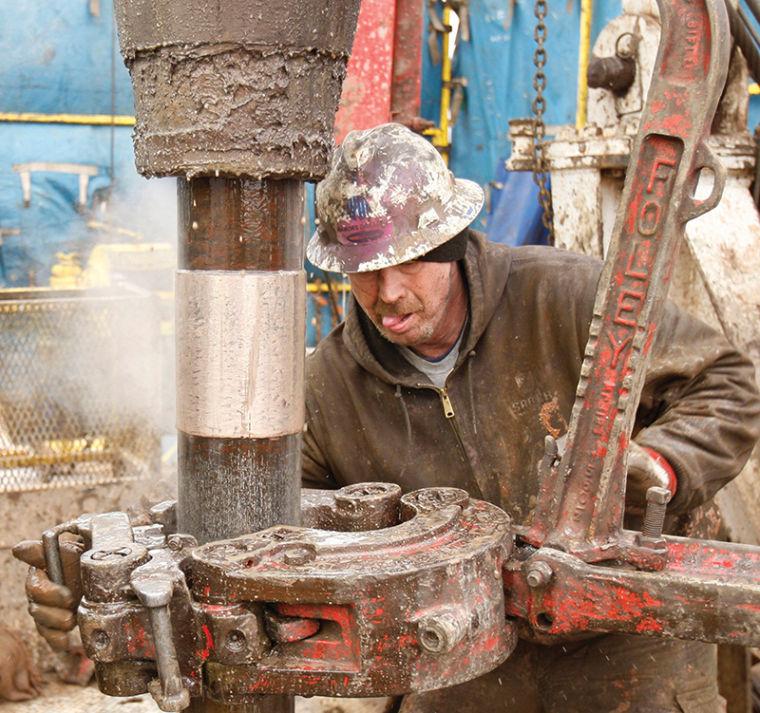Sacramento State Environmental Student Organization raises awareness on anti-fracking bill
Deckhands on a Sandridge Energy oil rig change out a drill pipe in a fracking operation on the Oklahoma border in Harper County, Kan., in February 2012. A 3.8-magnitude quake in the area on December 16, 2013, rattled windows, cracked walls and shook furniture.
March 5, 2014
Sacramento State’s Environmental Student Organization is working together with the California Student Sustainability Coalition in a campaign to bring awareness to the negative effects of hydraulic fracturing, a drilling technique used to extract natural gas and oil.
Commonly known as fracking, the process includes drilling deep underground into shale rock where the natural gas and oil resides. The drill hole is coated with cement and injected with a mixture of sand, toxic chemicals like hydrochloric acid and fresh water at high pressure to crack surrounding shale, releasing natural gas.
Fracking is detrimental to the health of individuals and ecosystems, including toxic chemicals that can pollute the air and water and increased earthquake frequency near fracking mines.
“Students need to be educated about the effects of fracking because very soon, they will inherit the levers of power to regulate this very dangerous, very resource-intensive technology,” said Michael Fitzgerald, emeritus professor and author of recent novel “The Fracking War.”
The campaign seeks to obtain an endorsement from Associated Students Inc. It would allow Sac State to become the third higher education institution, along with UC Berkeley and Los Angeles Community College District, to pass a similar resolution.
“If it were to pass, there is currently a bill in the legislature that is affiliated with this, so we are hoping that once ASI takes a stand on this confirming that students are against (fracking), we can use that as leverage to influence the policy makers in Sacramento,” said Environmental Students Organization Council Representative Kyle Lefton.
A petition collecting student signatures has been circulating campus and will be presented to ASI Wednesday. They will vote on the legislation March 12, and the decision will be posted on its website.
ASI’s Executive Vice President Erica Brown will be writing the anti-fracking legislation and said she has already presented it to the executive board.
“They have the next two weeks to do their own research and talk to their constituents on this piece of legislation,” Brown said.
Other clubs on campus have joined the efforts including Sacramento State College Democrats and Peace and Conflict International.
Senior international relations major Jessica Leahy from Peace and Conflict International said her group supports the anti-fracking petition.
“We always aim to support our members in making their own political decisions,” Leahy said. “As leaders of the club, the officers as a whole decided to support it, but we always encourage members and non-members to do their own research.”
Fracking occurs in nine counties in California including Sacramento, with Bakersfield in Kern county being the largest. According to a Sacramento Bee article in February, Kern county used 54.6 billion gallons of water to produce 162 million barrels of oil in 2008.
Within the last 30 years, a horizontal drilling method was developed that allows for efficient natural gas extraction. The technology is not readily available worldwide and companies are seeking to make billions of dollars on the new technique by exporting the high-demand natural resource, Lefton said.
“The opponents say they want to be the domestic exporters of natural gas,” Lefton said. “They want to call California the Saudi Arabia of natural gas.”
Fitzgerald analyzed fracking in drought-stricken areas in a Feb. 14 Finger Lake Times article titled “Natural and Man-Made Droughts.”
“In Michigan last year, a single hydrofracked natural gas well required 23 million gallons of fresh water, Fitzgerald wrote. “Californians are finally asking why politicians think there is enough water for fracking when residents will be severely limited in how much water they can use at home. If the state lacks sufficient water to irrigate the fertile Central Valley farms that feed much of the world, they ask, ‘how can there still be plenty of water for drilling?’”
In U.S. fracking areas, more than half of the natural gas and oil wells are in a drought., according to a February EcoWatch article titled “Trading Water for Fuel is Fracking Crazy.” In California, 97 percent of the wells are in areas of high-water stress, meaning more than 80 percent of the groundwater and freshwater has already been set aside for agriculture, industry and municipalities.
On a larger scale, the campaign seeks to gain enough support to get Gov. Jerry Brown to issue an executive order to ban fracking and demand for more research into the danger to water supplies, air pollution and community detriment, Lefton said.
To achieve the goal, it is crucial to continue growing support against fracking in California, Leftson said.
“If they understand how much it pollutes, how fast it chews up natural resources and how toxic it is to water supplies and the air, it might help them better argue against the very powerful, very well-funded gas companies like Exxon-Mobil that try to crush all opponents,” Fitzgerald said.





























































































































